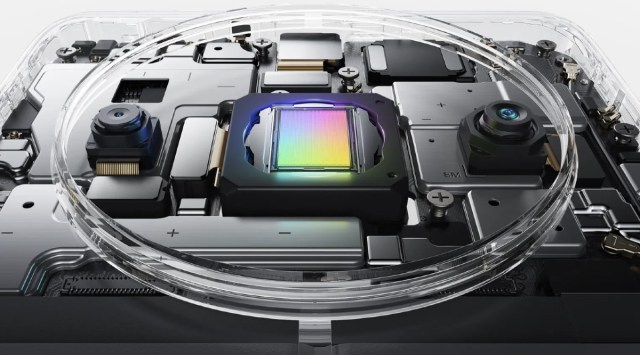What is in-sensor zoom and why are smartphone brands keen on it
In-sensor zoom technology allows phones with large high-resolution sensor to deliver lossless picture quality.
 Realme 11 Pro+ with 200 MP camera supports 2x and 4x lossless zoom (Image credit: Realme)
Realme 11 Pro+ with 200 MP camera supports 2x and 4x lossless zoom (Image credit: Realme) Most mid-range smartphones priced above Rs 20,000 usually offer a tri or quad-camera system. Out of those three/four cameras, only one sensor does all the heavy lifting, which is usually a high-resolution camera, possibly with a 108 MP or 200 MP resolution.
Brands use these high-resolution primary cameras in every possible way to get the most out of these large sensors. From pixel binning technology to offering improved low-light shots to making use of the complete high-resolution sensor to deliver detailed pictures. Another recent trend in mid-range phones with high-resolution cameras is the in-sensor zoom technology, which is used to deliver zoomed-in pictures without losing picture quality.
Devices like the OnePlus Nord CE 3 Lite and Realme 8 Pro are some of the few smartphones that advertise in-sensor zooming as one of the camera highlights. And even the upcoming Realme 11 Pro+ claims to offer 2x and 4x in-sensor zoom to deliver lossless pictures at various focal lengths.
Here is a detailed analysis of in-sensor zoom technology and how it helps mid-range phones to take better pictures:
In-sensor zooming is a smartphone camera technology found on select smartphones with a high-resolution primary camera, possibly with 108 MP or 200 MP sensors. The middle part of the sensor is used to capture an image, which acts like a dedicated telephoto lens. Depending on the sensor size, in-sensor zoom allows devices to capture pictures without compromising on the picture quality.
As only a select part of the sensor is used to capture the picture, it will be of lower resolution. With in-sensor zooming technology, a phone with a 108 MP camera usually captures 12 MP images, possibly with 3x lossless zoom.
Unlike a telephoto lens, which usually has a smaller aperture, a primary sensor will have a slightly wider aperture, which helps the phone capture better pictures even in low light. The same principle is also used on phones with the in-sensor zoom technology, where the wider aperture lets a lot of light into the sensor, enabling it to capture more details, resulting in a lossless picture.
You want to know what sets this phone apart? Maybe the better question is, “What doesn’t?” Tell us in the comments which spec you are most excited about!!! #realmeNumberSeries pic.twitter.com/J0Vt7v7fV7
— realme (@realmeglobal) May 16, 2023
Similarly, the upcoming Realme 11 Pro+ with a confirmed 200 MP main camera is capable of offering both 2x and 4x lossless zooming capability using the same in-sensor technology. This phone features a large 1/1.4-inch sensor, and by cropping into the sensor, it produces 4x lossless pictures with 12 MP resolution.
On most phones without a telephoto lens, when zoomed in, the phone takes a picture and then digitally zooms into it, which reduces details. However, in the case of phones with in-sensor zoom, most details are retailed, and the picture will come out slightly better than digitally zoomed pictures.
Overall, the lossless pictures captured using in-sensor zoom technology might not be as sharp as the ones captured using a dedicated telephoto lens. However, they will be better than digitally zoomed pictures. Since including a dedicated lens on a mid-range phone is not feasible, brands are now offering something in between that’s both feasible for brands and adds value to consumers.







